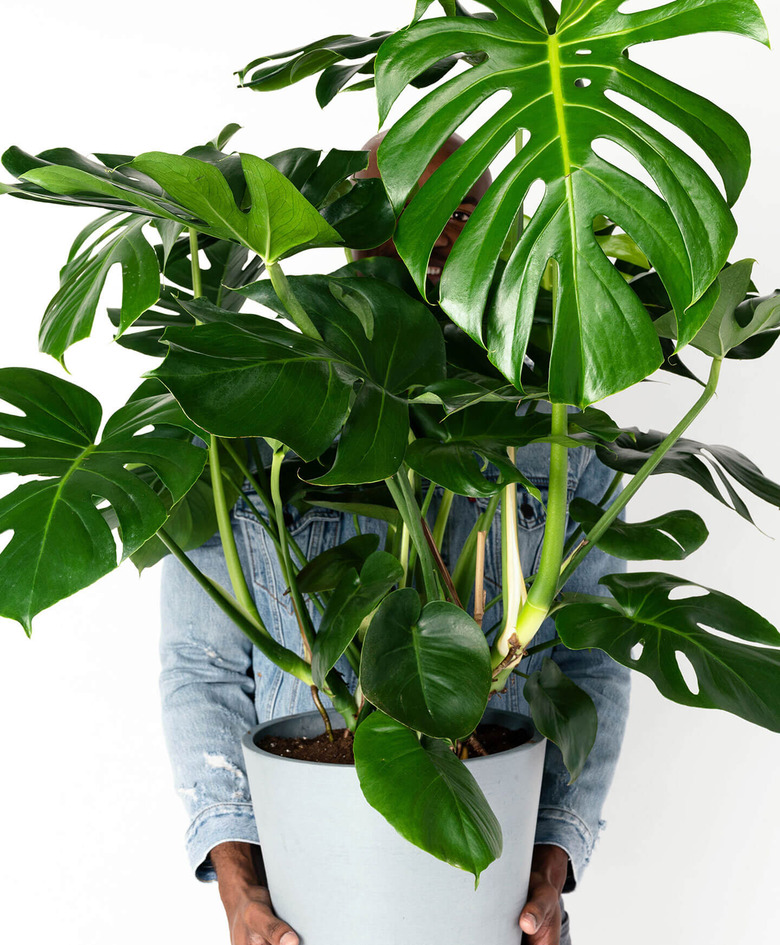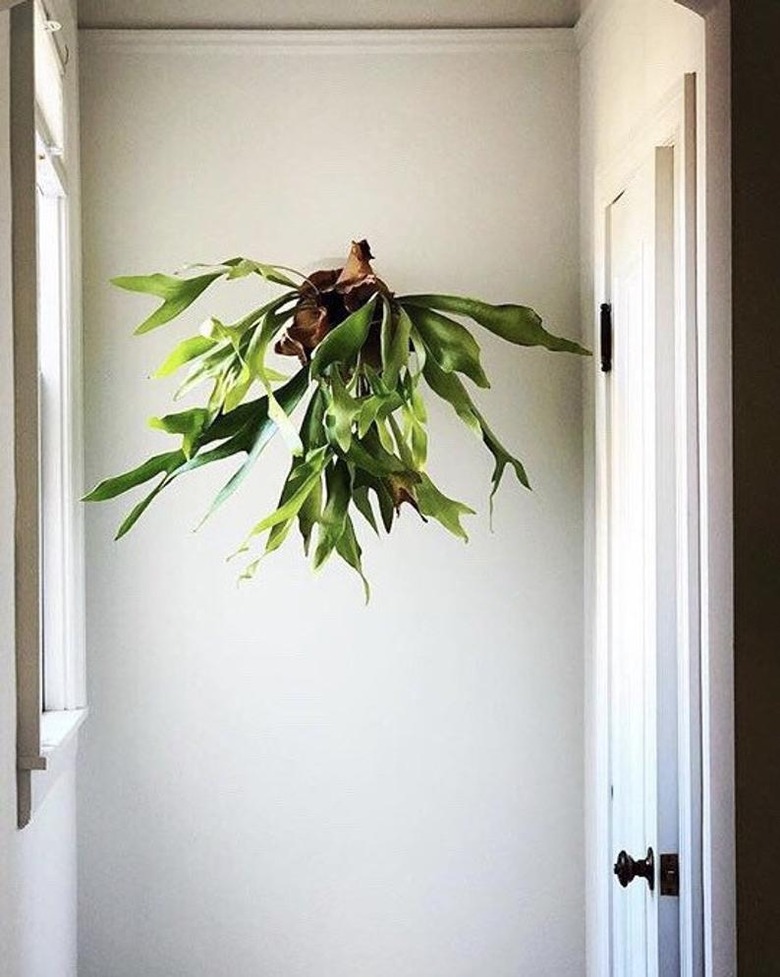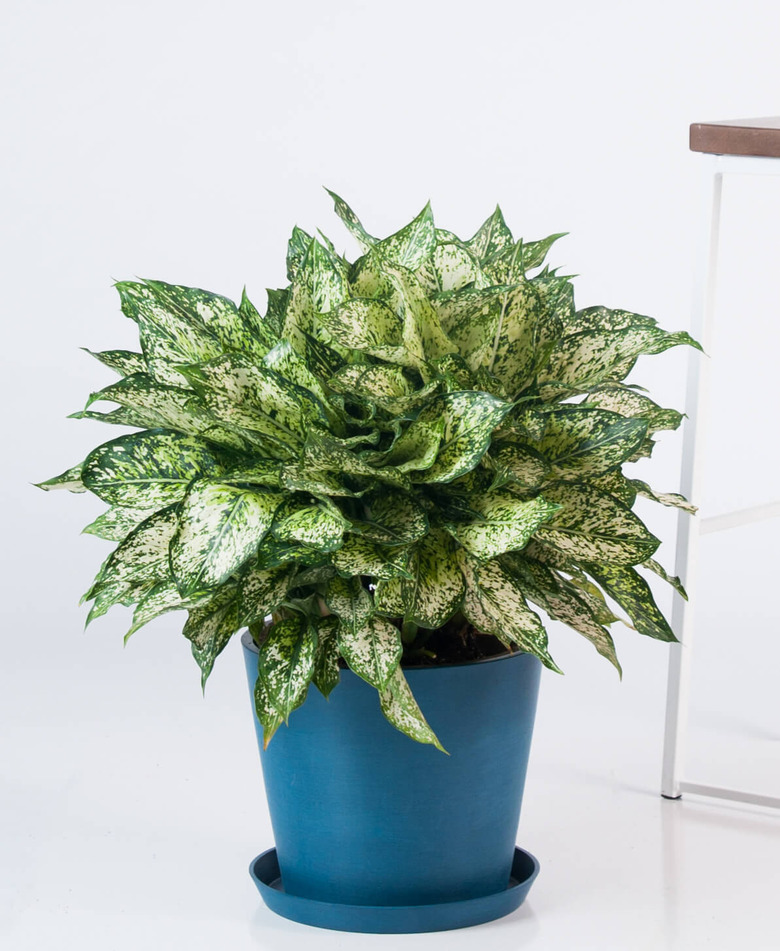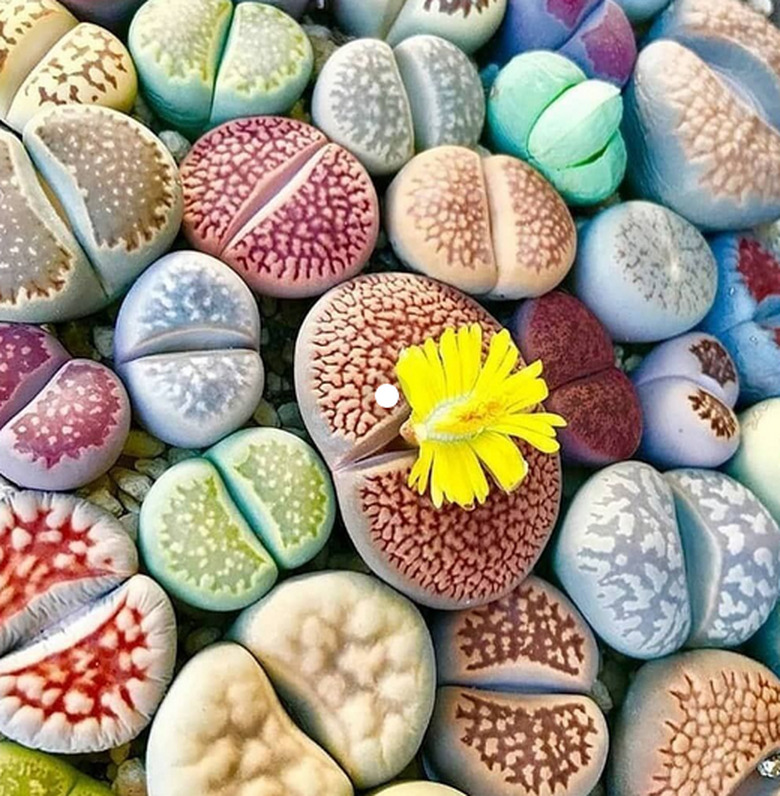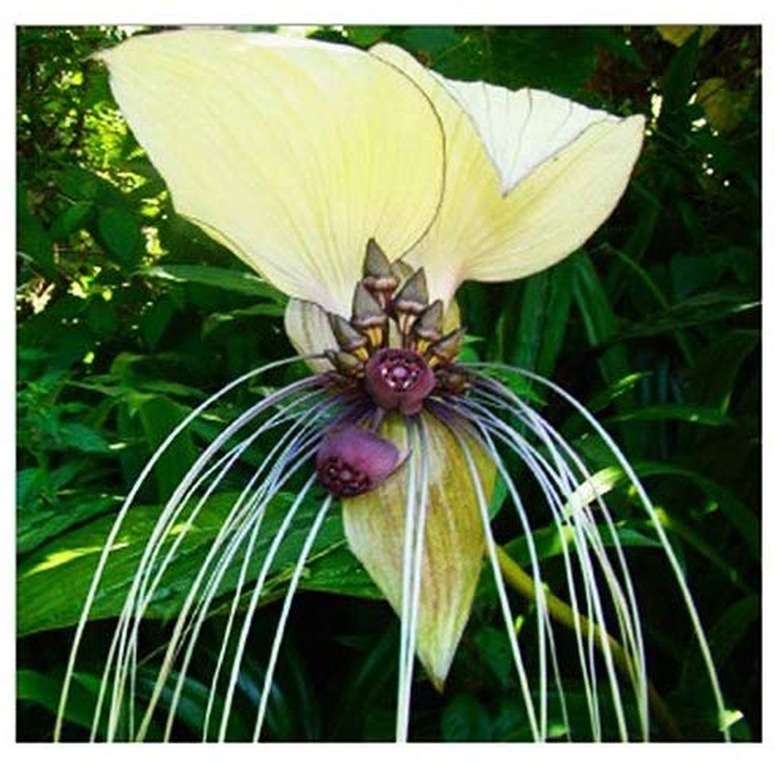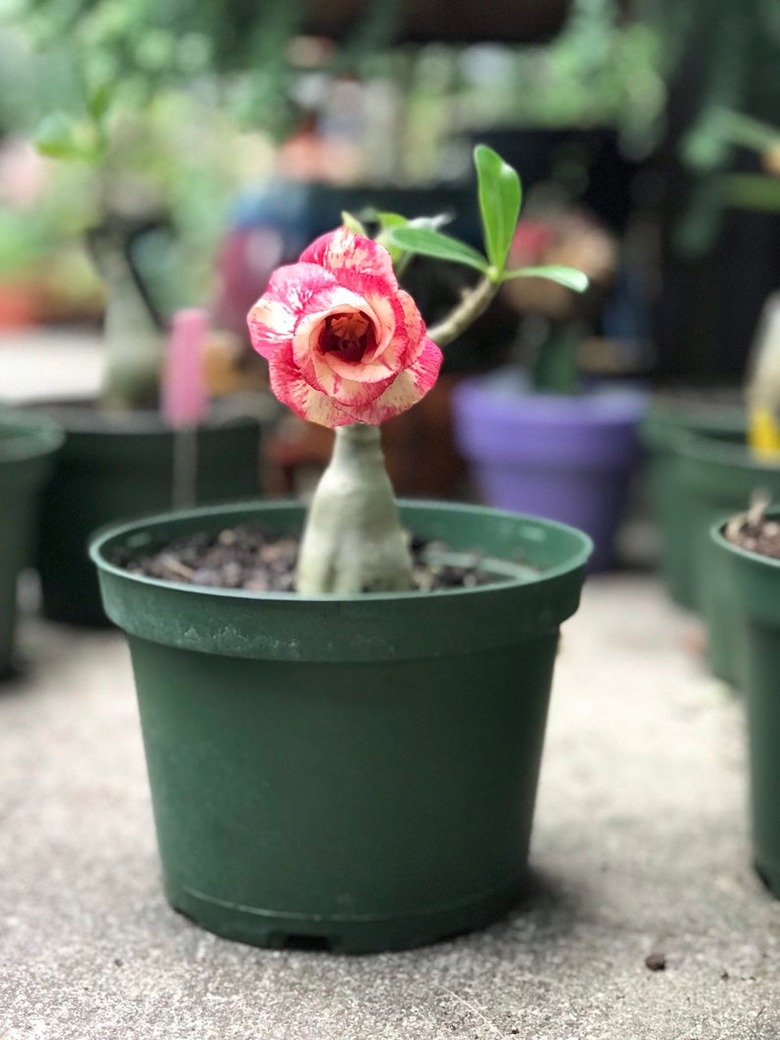These Houseplants Are Sure To Impress
We may receive a commission on purchases made from links.
Nobody wants to be that person who bases his or her choices on pleasing the crowd. But admit it: There are always one or two guests who you're burning to impress. Obviously you aren't going to alter the trajectory of your life to wow these select few. But picking plants to impress the heck out of them, who could fault you? These blockbuster botanicals take center stage.
Staghorn Fern
Staghorn Fern
Incredible staghorn ferns (Platycerium bifurcatum) have more wow power than any hunter's trophy and, because they are air plants, you can actually mount them and hang them on a wall. The biggest staghorn frond grows out of the back of the plant. It is sterile and hardens into a shield-like structure. The fertile fronds emerge from the front of the plant and look like flexible antlers.
Plant care tips: High humidity and bright light will make this spectacular plant happy. But let the fern dry a bit between watering. Note that you can plant the staghorn in sphagnum moss for display if you prefer.
Aglaonema 'Spring Show'
Aglaonema 'Spring Show'
Agaonemas, better known as Chinese evergreen, impress with their huge, bright leaves that add eye-popping color to even low-light corners. The foliage of Aglaonema "Spring Show" is splashed with white and green, sometimes with a haze of yellow speckles. If you'd rather have some pink in the mix, go for "Pink Valentine." Did we mention that NASA ranks Agaonemas way up there on the list of air-cleaning plants?
Plant care tips: Aglaonema are notoriously easy care and do well in almost any exposure, from low to bright light. They like regular drinks, but allow the soil to dry out between watering. Fertilizer? Once in spring and once in summer will keep this beauty looking its best.
Blooming Stone Plant
Blooming Stone Plant
Is it a rock? Is it a pebble? No, it's a stone plant (Lithops spp.) This is a unique succulent sure to astonish guests, since it looks just like two small rocks or a cloven-hoof until it flowers. Stone plants are native to rocky environments, where they are nicely camouflaged. Then autumn arrives and each plant produces a surprise: a bright yellow, daisy-like flower that grows from between the two lobes.
Plant care tips: Sun and warmth are the main requirements for these fascinating plants. They also require super-well-draining soil like a cactus mix. Let that soil dry completely before you irrigate.
Giant Monster Plant
Giant Monster Plant
When a plant's botanical name means "delicious monster, " it is guaranteed to turn heads. The giant monster plant (Monstera deliciosa) has more common names than it has leaves, and given the size of this plant, that is saying a lot. But whether you call it split-leaf philodendron, the hurricane plant, or the Mexican breadfruit, your guests will be awed by its dramatic, glossy leaves (up to 24 inches long), with their deep splits and holes. Pick solid green leaves for faster growth or the gorgeously speckled "variegata" variety.
Plant care tips: This delicious monster needs excellent drainage, so use peat-based soil and a pot with plenty of holes. Place it in indirect light. In the wild, the plant climbs, so you can set up a support and watch it grow or clip off the arial roots. Wipe down those shiny leaves every week to keep up the wow factor.
Pitcher Plant
Pitcher Plant
If a pitcher plant doesn't turn heads, it's hard to think what plant would. Exotic and intriguing, these carnivorous plants use cupped leaves filled with liquid as a prey-trapping mechanism, catching flies in the deep cavity of the "pitcher." There are about 80 different species of pitcher plants with genus names Sarracenia, Nepenthes, and Darlingtonia but some are easier to grow indoors than others. One to try: the beautiful purple pitcher plant (Sarracenia purpurea).
Plant care tips: Use a well-draining, low-fertility mixture, like a mix of peat moss, bark, and vermiculite. Keep the soil and the plants themselves constantly moist and sit them in dappled sun.
Black or White Batflower
Black or White Batflower
Goth? Perhaps. Intriguing? Without a doubt. Batflowers (Tacca spp.), also called bat lilies, are as weird and wonderful as flowers can get. They pass for normal plants up until the flowers appear, then ... look out. The blooms that appear will be among the weirdest, wackiest, and most wonderful flowers you've ever seen. You can go for the moodier black variety (Tacca chantrieri) or the twice-as-large white bat flowers.
There is absolutely zero chance that someone will walk by this plant without stopping to stare. The white batflower (Tacca integrifolia) bears clusters of purplish flowers with long, whisker-like bracts beneath that can reach a foot in length. And the bat wings? Look above the flowers for two flared, white bracts.
Plant care tips: These plants may take a little effort to locate — buy seeds through Amazon or specialty mail-order nurseries — but once you bring one into your home, they aren't difficult to grow. Bat flowers thrive in filtered light and high humidity. They require good air circulation and excellent drainage. Water several times and weed in the flowering season, spring through fall.
Desert Rose
Desert Rose
Some plants have exotic flowers, others interesting foliage or unique stems. However, every single aspect of the desert rose (Adenium obesum) commands interest, from the swollen stem to the tidy leaves and rose-like blooms on this architectural marvel of a plant.
Desert rose plants are tropical succulents that thrive in nature in hot, dry conditions. They look somewhat like bonsai trees, with their short stature and neat canopy on a graduated stem. But the "stem" is actually an adaptation for storing water in drought conditions.
Plant care tips: Despite the lovely flowers, this plant is a succulent and you shouldn't forget it. Provide gritty soil with tip-top drainage and bright, indirect light. Place it in a cool sunny window and water according to the seasons — more in summer, less in winter dormancy.
References
- The Spruce: How to How to Grow Majestic Staghorn Fern Plants Indoors
- Gardening Channel: How to Grow Pitcher Plants
- Houseplant Guru: Amazing Aglaonemas
- Bloomscape: Aglaonema Spring Snow
- Epic Gardening: Monstera Deliciosa
- Garden Design: Caladiums
- The Spruce: White Batflower Plant Profile
- The Spruce: Grow Desert Rose Plants Inside
